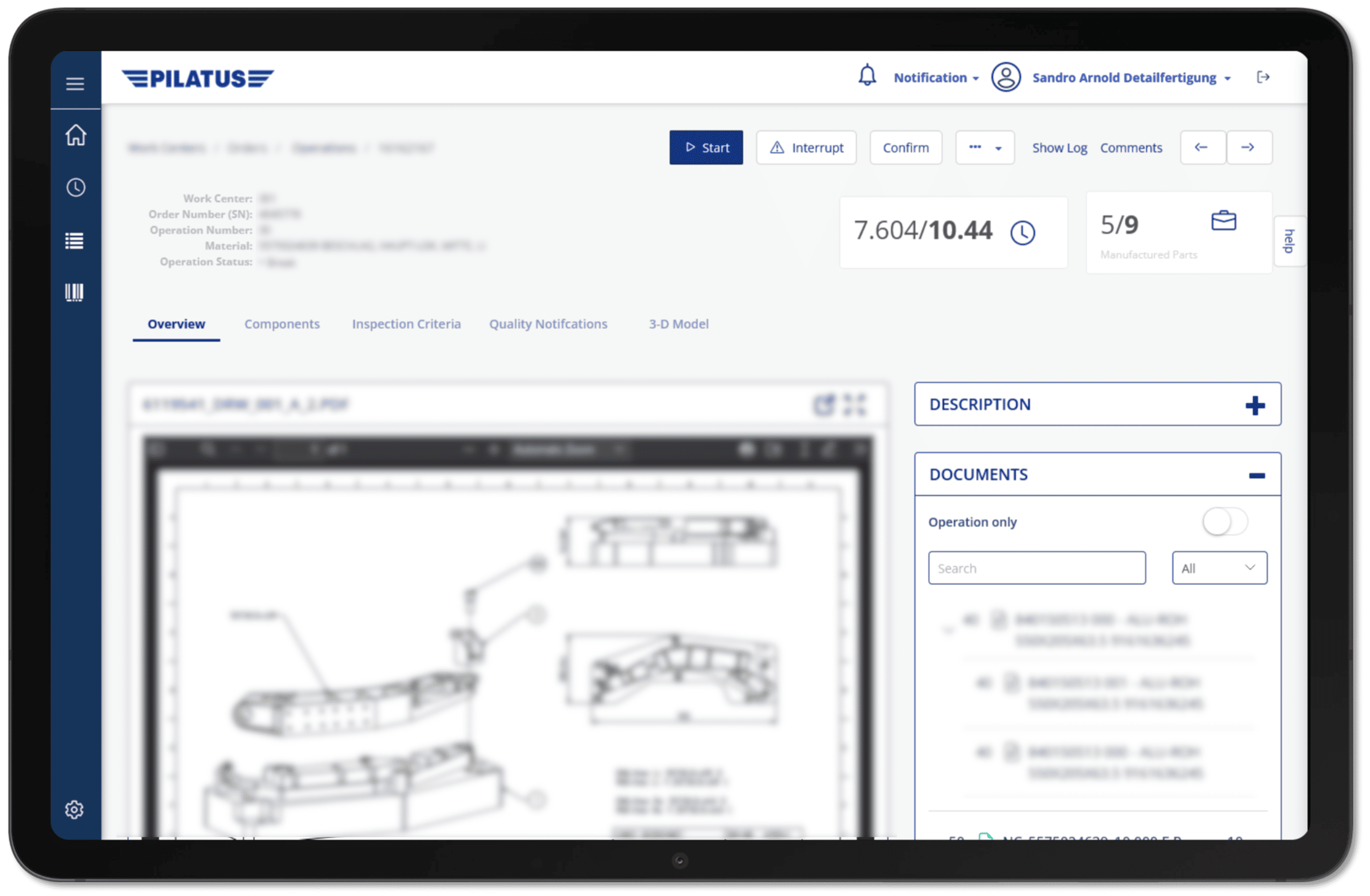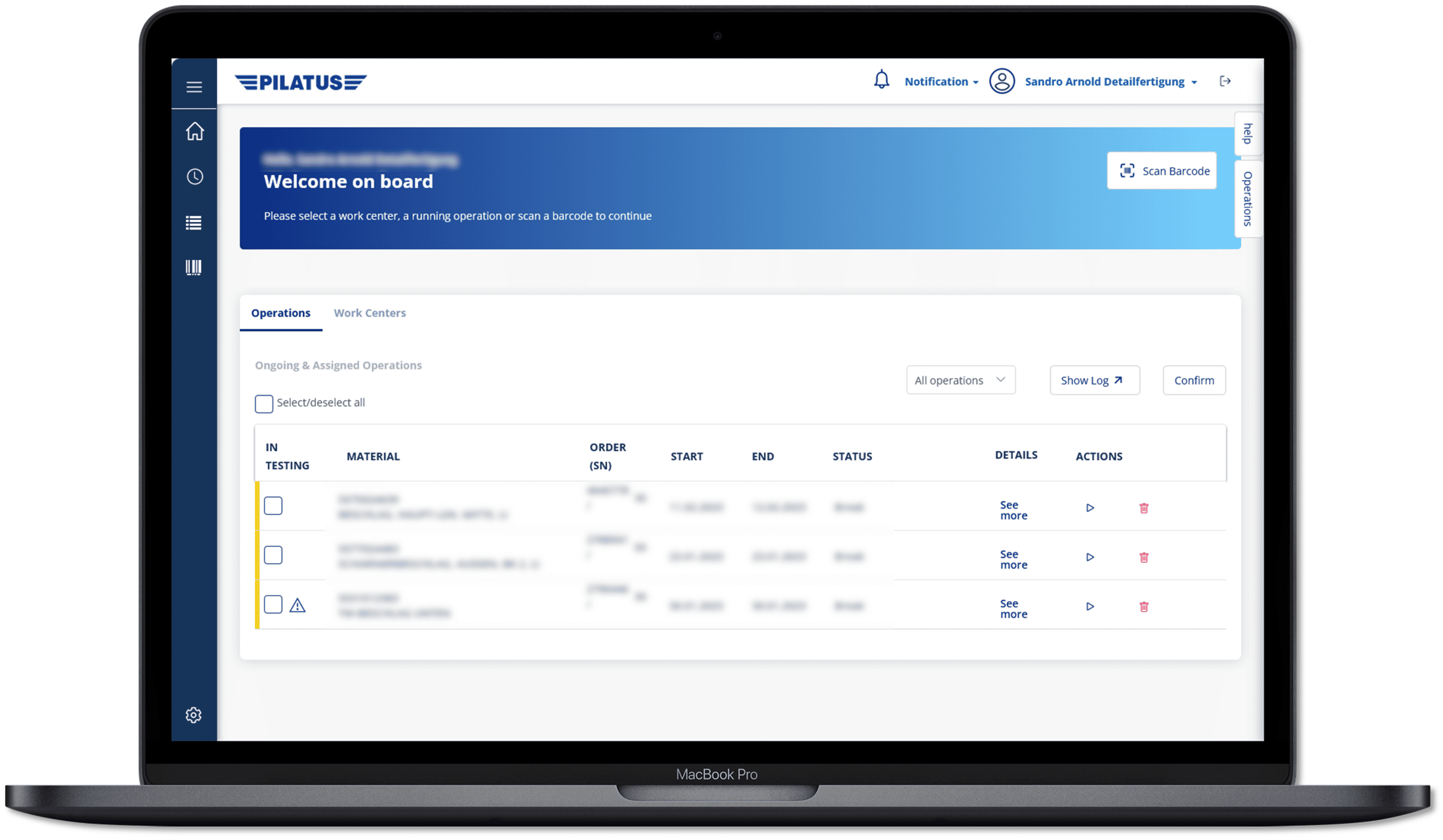
Increase Transparency and Connectivity in Aerospace Manufacturing

Pilatus delivers some of the “coolest planes on the planet” used for pilot simulation, military training, and commercial travel in the niche of short takeoff and landing (STOL). The company has an 85-year history, and its aircrafts and aspirations are continually forward-thinking with innovation and sustainability at the forefront.
This focus on innovation permeates into Pilatus’ IT landscape, where the pressing need for a digital work order solution in 2020 led to exploring and adopting the Mendix low-code application development platform. Today, Pilatus has 7 Mendix applications in production and another 20 in the pipeline that are contributing to shopfloor process transformation.
Legacy Software in Modern Manufacturing
Pilatus is known for delivering cutting-edge and modern aircrafts, but their IT landscape consists of many decades-old systems and workaround processes. “When we look at our growing legacy landscape we have a lot of custom SAP solutions and oral processes which are not documented,” said Luca De Simoni, Product Owner for Digital Operations and Maintenance.
Pilatus’ legacy landscape has also led to the creation of shadow IT solutions over the years. “You’ll find many different styles of solution development within the company. Excel is commonly misused in this way. Our entire legacy intranet is based on PHP. We have many .NET applications, and a lot of SAP ABAP coding and many other custom software, so you’ll find a lot of non-standard solutions,” De Simoni said.
Their landscape includes a large Teamcenter presence and an SAP S/4HANA upgrade on the horizon. This complexity presents a need for standardization; however, Pilatus’ unique business processes and custom requirements often make adopting commercial off-the-shelf (COTS) solutions challenging.
“We wanted to start developing a 360-degree view into the part chain, so that every part is traceable from design to the end-of-life. When it comes to the shopfloor this means becoming completely paperless, so that is one of the main goals we needed to support.”
In 2020 these challenges came to a head as Pilatus needed to deliver a digital work order solution within a short timeframe. Ultimately, Pilatus decided on Mendix to deliver their proof of concept due to the platform’s flexibility, as there were many unknown requirements, speed of delivery, and resource efficiency. De Simoni acknowledges that platform licenses cost money, but the cost of development was “significantly lower than buying a product or full-blown MES with heavy customization efforts.”
The Digital Work Order (DWO) proof of concept was delivered with Mendix in just 14 weeks and has been iterated on over the last two years, becoming a critical system in Pilatus’ production line.
The proof of concept laid a valuable foundation for Pilatus, spurring unexpected ideas. “We had established things like the connection to SAP and Teamcenter and realized there were opportunities to make more use of our investment in the platform. That’s how we came to find new use cases and started to establish a low-code and Mendix strategy,” he added.
Transparent and Connected Production
One year after adopting Mendix, De Simoni and the team revisited the team structure and strategy based on what they had learned. He reflected that establishing the vision, strategy, and positioning of Mendix early in adoption is critical for scaling a low-code practice. In June 2021 Pilatus also enlisted the support of expert partners to further accelerate their learning and delivery.
The Pilatus team now cites three months as their average time to market for new Mendix-built solutions. Part of the speed they’ve unlocked is through leveraging the Mendix Marketplace as well as creating their own reusable components.
One expert partner supporting the Pilatus team is Georg Holz, a Mendix developer with over 13 years of platform experience, who has been a key contributor in enhancing DWO over the last two years.
“The goal is to surface everything which needs to be built according to SAP along with the corresponding drawings, documentation, 3D models, and the steps that need to be taken,” Holz said. “As tasks and orders are completed in the application, they are reflected back in the core system and updated in SAP in real-time so that Pilatus can easily see the progress on a particular aircraft and how far it is from delivery.”
One recent enhancement allows employees to log their time in the application. Historically, shopfloor employees would have to go to a central computer and log their time all at once. Now, they can open the application on their tablet and track in real-time.

“Now Pilatus can see the progress of the orders, which was quite difficult before when everything was done verbally or on paper. It allows the shopfloor to meet higher standards for quality and process efficiency,” said Holz.
“Another quality check we built in is that there always needs to be a second person approving the work that is assigned, which previously would have been done on paper. Being able to assign the work to the next employee digitally helps move tasks along much more quickly and improves efficiency,” he added.

Reaching New Heights with Low-Code
Mendix has carved out a place within the Pilatus technology stack to enable greater innovation and contribute to a more connected manufacturing process – and it’s already sparked new ideas. Another new endeavor for the Pilatus team as a result of developing in Mendix is harnessing IoT data to track the status of parts and machines in the production line.
“It’s become a trend for us that with each Mendix project we start, we are always the first ones to try something. We end up talking to other teams and even when we have requirements they can’t fulfill yet, for instance exposing a certain data set, it triggers them to prioritize working on new and beneficial things,” said Holz. “In this case it was getting the IoT data. We had the MVP already available and once we received that data we published another version, and the business was very happy about that.”
The Pilatus team has high hopes for their low-code program moving forward.
“We have a strategy and we see where the benefits are from Mendix. Currently, we are on the shopfloor and we have a lot of potential,” said De Simoni. “We want to contribute to the ‘digital factory’ or ‘smart factory’ and increase transparency along the production process.”






